Swamiji's Books
NEXT ARRlVAL
ATMANUBHAVA
THE EXPERIENCE OF ATMA (lts role, relevance, and indispensability in gaining Brahmajnana)
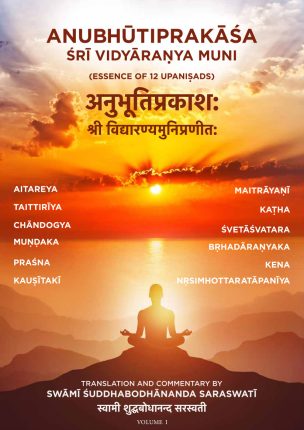
All of us including all the living creatures without any exception seek happiness and shun sorrows whole lifelong. This is a universal fact. Invariably the method adopted is to do something and gain its result. But the annals of human history records that so far no one has ever accomplished the total fulfilment by such method.
And yet, this perennial hunting unabatedly continues. Upaniṣads contained in the Vedas address this problem.
The Upaniṣads diagnose our mistaken identity as the root cause of above human problem, popularly known as saṃsāra. Erroneously we assume as I the actual inert mass of our embodiment (though seemingly sentient) riddled with calamitous sorrows. We are totally unaware of our real ‘I’ which happens to be the ever-existent, self-evident, ever-experiencing, paramānanda (limitless happiness) totally free from even the least trace of sorrows.
But, this true ‘I’, being imperceptible, the words fail to describe it with their literal meanings and the mind bounces being unable to objectify it as ‘this’. Therefore, Upaniṣad resort to indirect methods of teaching which needs to be unfolded by competent masters. Envisaging this difficulty, the genius teacher Śrī Vidyāraṇya Muni has taught with utmost clarity the twelve Upaniṣads in twenty chapters entitled Anubhūtiprakāśa. The lucid and precise English commentary does full justice to the subject-matter.
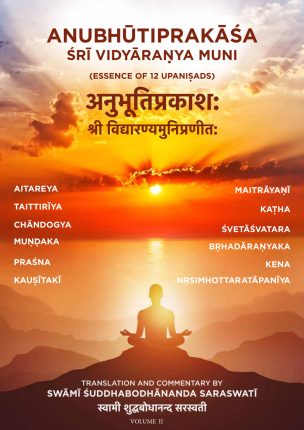
All of us including all the living creatures without any exception seek happiness and shun sorrows whole lifelong. This is a universal fact. Invariably the method adopted is to do something and gain its result. But the annals of human history records that so far no one has ever accomplished the total fulfilment by such method.
And yet, this perennial hunting unabatedly continues. Upaniṣads contained in the Vedas address this problem.
The Upaniṣads diagnose our mistaken identity as the root cause of above human problem, popularly known as saṃsāra. Erroneously we assume as I the actual inert mass of our embodiment (though seemingly sentient) riddled with calamitous sorrows. We are totally unaware of our real ‘I’ which happens to be the ever-existent, self-evident, ever-experiencing, paramānanda (limitless happiness) totally free from even the least trace of sorrows.
But, this true ‘I’, being imperceptible, the words fail to describe it with their literal meanings and the mind bounces being unable to objectify it as ‘this’. Therefore, Upaniṣad resort to indirect methods of teaching which needs to be unfolded by competent masters. Envisaging this difficulty, the genius teacher Śrī Vidyāraṇya Muni has taught with utmost clarity the twelve Upaniṣads in twenty chapters entitled Anubhūtiprakāśa. The lucid and precise English commentary does full justice to the subject-matter.
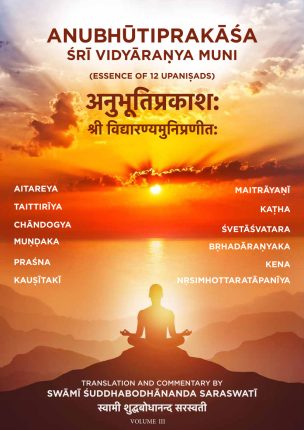
All of us including all the living creatures without any exception seek happiness and shun sorrows whole lifelong. This is a universal fact. Invariably the method adopted is to do something and gain its result. But the annals of human history records that so far no one has ever accomplished the total fulfilment by such method.
And yet, this perennial hunting unabatedly continues. Upaniṣads contained in the Vedas address this problem.
The Upaniṣads diagnose our mistaken identity as the root cause of above human problem, popularly known as saṃsāra. Erroneously we assume as I the actual inert mass of our embodiment (though seemingly sentient) riddled with calamitous sorrows. We are totally unaware of our real ‘I’ which happens to be the ever-existent, self-evident, ever-experiencing, paramānanda (limitless happiness) totally free from even the least trace of sorrows.
But, this true ‘I’, being imperceptible, the words fail to describe it with their literal meanings and the mind bounces being unable to objectify it as ‘this’. Therefore, Upaniṣad resort to indirect methods of teaching which needs to be unfolded by competent masters. Envisaging this difficulty, the genius teacher Śrī Vidyāraṇya Muni has taught with utmost clarity the twelve Upaniṣads in twenty chapters entitled Anubhūtiprakāśa. The lucid and precise English commentary does full justice to the subject-matter.
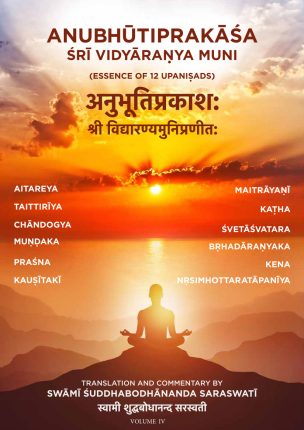
All of us including all the living creatures without any exception seek happiness and shun sorrows whole lifelong. This is a universal fact. Invariably the method adopted is to do something and gain its result. But the annals of human history records that so far no one has ever accomplished the total fulfilment by such method.
And yet, this perennial hunting unabatedly continues. Upaniṣads contained in the Vedas address this problem.
The Upaniṣads diagnose our mistaken identity as the root cause of above human problem, popularly known as saṃsāra. Erroneously we assume as I the actual inert mass of our embodiment (though seemingly sentient) riddled with calamitous sorrows. We are totally unaware of our real ‘I’ which happens to be the ever-existent, self-evident, ever-experiencing, paramānanda (limitless happiness) totally free from even the least trace of sorrows.
But, this true ‘I’, being imperceptible, the words fail to describe it with their literal meanings and the mind bounces being unable to objectify it as ‘this’. Therefore, Upaniṣad resort to indirect methods of teaching which needs to be unfolded by competent masters. Envisaging this difficulty, the genius teacher Śrī Vidyāraṇya Muni has taught with utmost clarity the twelve Upaniṣads in twenty chapters entitled Anubhūtiprakāśa. The lucid and precise English commentary does full justice to the subject-matter.
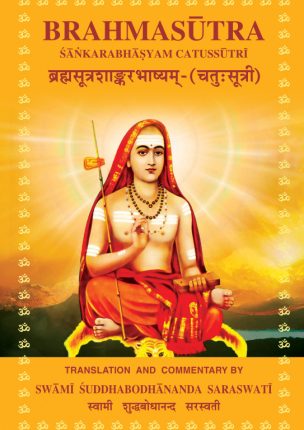
Brahmanirupana (also called Atmanirupana) and Brahmamimamsa are the two facets of Vedantic teaching. Brahmanirupana unfolds and ascertains the true nature of Brahman (identical with atma – the true ‘I’), the means to know Brahman and the result thereof. Brahmamimamsa analytically establishes the exact and authentic nature of Brahman, the means to gain Brahmajnana and the result of such knowledge.
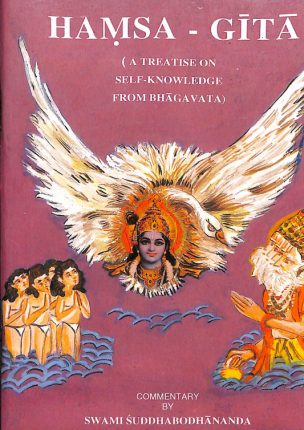
To depend on sense-objects for happiness is quite natural for all. But the scriptures reveal to us the calamitous results of sense-indulgence. It exhorts us to know ‘I’ – ātmā in reality. Yet the obsession with the sense-objects, resulting in their grip over the mind is a vicious circle. Haṃsa-Gītā from Bhāgavata Purāṇam provides the solution. It is a part of Uddhava-Gītā taught by Bhagavān Kṛṣṇa to Uddhava.
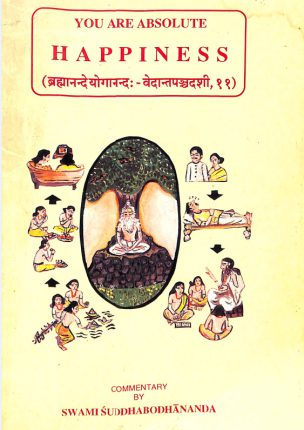
A male musk deer goes on sniffing all around to find the fragrance that it smells. The deer is totally unaware of its origin from its naval only. We are also in the same plight. We seek happiness in the external world of objects, beings and events. But what ‘I’ am in reality is the ever-existent limitless happiness totally free from sorrows. Śrī Vidyāraṇya Muni establishes this fact by analysing the universal experience of deep sleep. He also provides the means based on Vedānta to discover it. This text is a commentary on the eleventh chapter of Pañcadaśī.
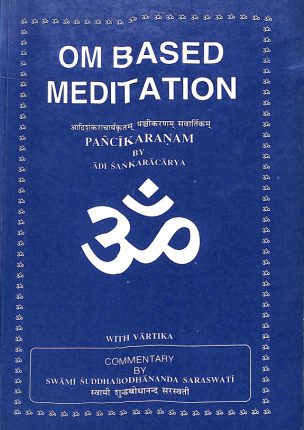
The meditation begins with a deliberate effort to maintain the flow of similar thoughts of the entity under consideration to the exclusion of dissimilar thoughts. By proper and adequate practice for a sufficiently long period, it results into the absorption of mind in the meditated. Panchikarna meditation is authored by Adi Shankaracharya and the vartika (poetic exposition) is composed by his disciple Sureshwaracharya.
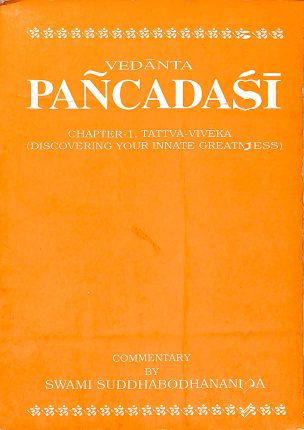
Panchadasi composed by Sri Vidyaranya Muni is an indispensible treatise for all mumukshus in the initial stages. It unfolds one’s real nature, provides the means and describes the finale of atmajnana identical with moksha. Some of its chapters use our daily experiences such as sense-perceptions, sense-pleasures, sleep and thoughts to pinpoint what “I” in reality the atma is.
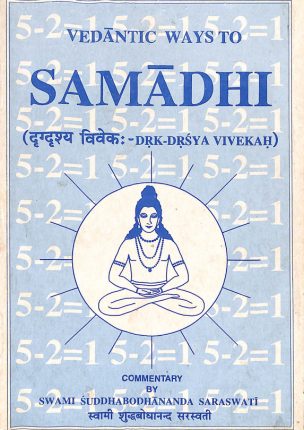
Viveka (also called Cit Jada Viveka) is the teaching originally contained in the Saraswati Rahasyopanishad taught by Goddess Saraswati. it is based on the universal experience that the knower principle (drik) is the distinct from the known entities (drishya). With incisive inquiry it ascertains the atma – svarupa with utmost precision. Six ways of Samadhi with their means is its unique feature.
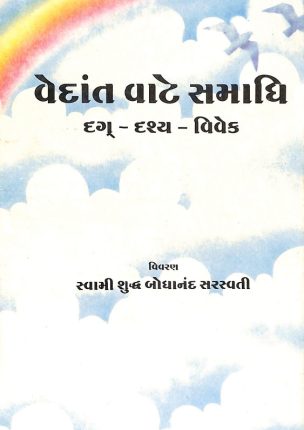
દૃગ દૃશ્ય વિવેક, જેને ચિત્ જડ વિવેક પણ કહેવાચ છે એ મૂળસ્વરૂપે સરસ્વતી રહસ્ચોપનિષદમાં સમાવિષ્ટ ઉપદેશ છે અને તે દેવી સરસ્વતી દ્વારા શીબવવામાં આવેલ છે.
તે વૈશ્વિક અનુભવ પર આઘારિત છે કે જ્ઞાતા તત્વ એજ્ઞાતથી અલગ છે. ઝીણવટભરી તપાસ સાથે તે આત્મસ્વરૂપને અત્ચંત ચોકસાઇથી શોઘી કાઢે છે.
સમાઘિના છ માર્ગો તેના સાઘન સાથે, એ તેની આગવી વીશેષતા છે.
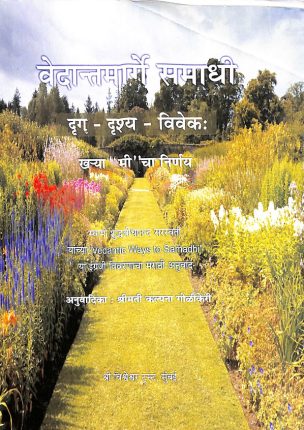
दृक्दृश्य विवेक अथवा चित् जड विवेकाचे मूळ देवी सरस्वरतीने उपदेशिलेल्या सरस्वतिरहस्योपनिषदामध्ये सापडते. दृक् तत्व हे दृश्यतत्वाहून अत्यंत भिन्न असते या सार्वत्रिक अनुभवावरती ही शिकवण आधारलेली आहे . या उपदेशाने सूक्ष्म व तीक्ष्ण मीमांसेद्वारे आत्मस्वरुपाचा यर्थार्थ निश्चय व अनुभव प्राप्त करता येतो. समाधी चेसहा मार्ग ही या ग्रन्थाची अपूर्वता आहे.
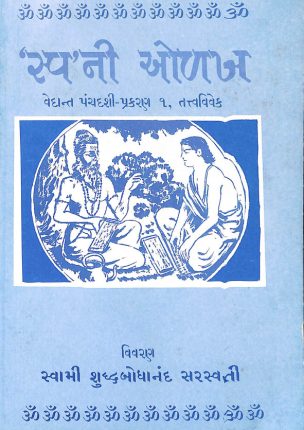
શ્રી વિદ્યારણ્યમુનિ રચિત પંચદશી અધ્યાત્મશાસ્ત્રનો એક શ્રેષ્ઠ પ્રકરણગ્રંથ છે. એમાં નિરૂપિત આત્મસ્વરૂપ માનવ જીવનનો અંતિમ ધ્યેય, મોક્ષ અને એના સાધન આ બધાનું મુમુક્ષુજનો માટે શરૂઆતથી અંત સુધી માર્ગદર્શન કરે છે. તત્વ વિવેક નામક એના પહેલા અધ્યાયમાં ઇન્દ્રિય પ્રાપ્ત શબ્દ, સ્પર્શ, રૂપ, રસ અને ગંધ એના પ્રત્યક્ષ જ્ઞાનને આધારે આત્મસ્વરૂપ નિરૂપણ કરીને, આત્મા પરમપ્રેમાસ્પદ છે એવું દર્શાવવામાં આવ્યું છે. સાથે પ્રજ્ઞા સમાઘિ અને એના સાધનનું પણ વિવેચન ઉપલબ્ધછે. સ્વની ઓળખ એ સ્વામી શુદ્ધબોધાનંદજી એ લખેલ અંગ્રેજી વ્યાખ્યાનનું ગુજરાતી ભાષાંતર છે.
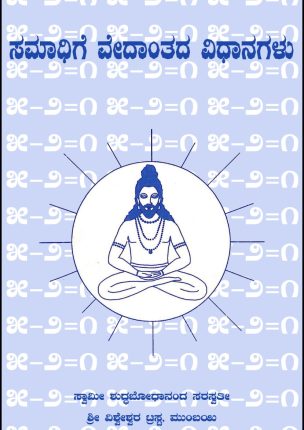
The above book is ready for download now. Two more books also in Kannada will be ready in a year.




